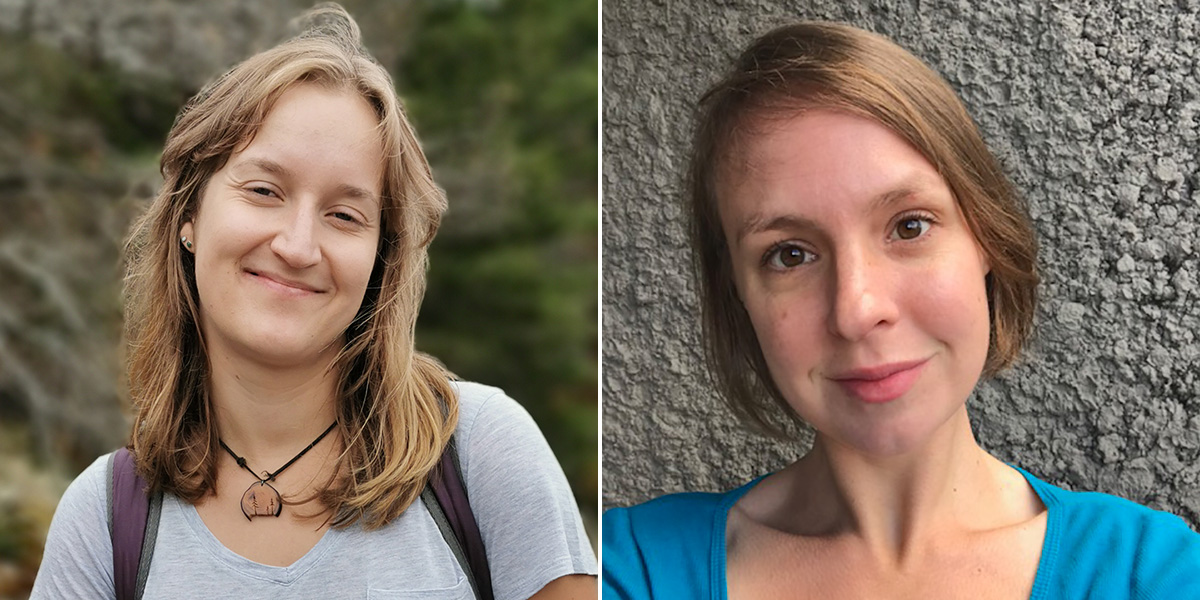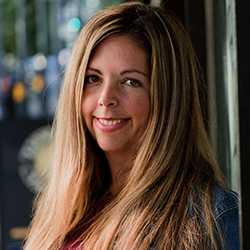
Natalia Lassak (left) and Emily Brooks
What does “function” mean for young adults living with mental health challenges?
This was the question that inspired UBC Master of Occupational Therapy graduates Emily Brooks (EB) and Natalia Lassak (NL) in their Capstone research project.
We sat down with Brooks and Lassak – and their supervisor, Dr. Skye Barbic (SB)– to learn more about what function is and how their research is helping to empower and support young adults from diverse backgrounds in living their best lives.
First, what is function?
EB: Function is all of the things that people need to do every day to take care of themselves, to participate in society and to enjoy the activities that they do – it includes everything from brushing their teeth or bathing every day to social interactions and going to work or school.
“Function is all of the things that people need to do every day to take care of themselves, to participate in society and to enjoy the activities that they do – it includes everything from brushing their teeth or bathing every day to social interactions and going to work or school.”
Emily Brooks
Tell us about your research project
NL: With our project, we were working to create a tool to measure function in young adults 16-24 years old along a spectrum. We were trying to understand from their perspective what it means to function well or not so well, and what is involved in that.
The reason we’re so interested in this is because function significantly affects health, mental well-being, quality of life and social outcomes. A lot of research shows that individuals with mental health challenges often struggle with everyday things like self-care, and they also tend to have more challenges with things like work or study. We need to understand areas that need more support and intervene early to help young adults to thrive.
How were young adults involved in the project?
NL: Young adults were involved in all aspects of the project, from designing the research question and the focus groups, to recruiting participants, collecting the data and analyzing the results. Through the focus groups, they could share their feedback on the tool. We quickly realized we needed to use youth-friendly language, which was the inspiration for the title of our paper: It’s Lame: Developing a Scale of Function for Young Adults Accessing Integrated Health Services.
EB: We also had a 26-year-old with lived and living experience act as a peer researcher on the project, to help ensure that we were capturing the young adult perspective in our work. By also having our peer researcher involved in focus group recruitment, it ensured we had diverse representation and voices at the table.
How is this tool different from what is currently being used?

Skye Barbic, Assistant Professor, Department of Occupational Science & Occupational Therapy
SB: There are literally hundreds of tools available to measure how someone is functioning, however there are very few that are for young people. This project provides an opportunity to stop, pause and co-design tools for the people who they’re meant to be designed for. It’s a communications tool, it’s a tool to help design health services, and it’s a tool to empower young people to have conversations with their health providers.
EB: With this tool, the young adults themselves will be the ones reporting on how they’re doing in each area of their lives. That can be quite powerful, as it allows them to identify where they want to make improvements and can help to launch conversations with their care providers about the plan to get there.
Why are occupational therapists uniquely positioned to do this work?
EB: Facilitating function is an integral part of an occupational therapist’s role, as they specialize in collaborating with people to enable them with what they need, want, or are expected to do.
Occupational therapists also explore what is important to people and why, making them ideally-situated to collaborate with young adults to design a tool that captures what function means to them, and to use this data to develop meaningful care plans that support the client’s full range of goals.
How do you think this research will help to promote youth mental health?
SB: This tool will be used as a guide to help youth navigate what they need to do to help keep themselves moving forward in their day-to-day lives. It will also help guide health services—like those available at Foundry across B.C. — in providing the best possible support.
EB: If function is seen as being binary, either you’re functioning or you’re not functioning. By using a tool like this, everyone can celebrate improvements, no matter where they are in their journey.
Read more about Dr. Skye Barbic and her work at Foundry in the UBC Faculty of Medicine’s digital magazine, Pathways.